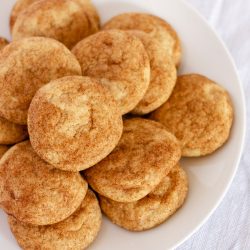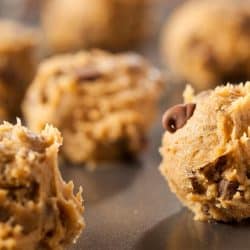Everyone loves a cookie, but there are just so many to choose from.
Snickerdoodle and sugar cookies are among the most popular, but how different are they really?
If you've wondered about this, wonder no more! We have done the research to put an end to your cookie conundrum.
Traditional Snickerdoodle cookies are made with cinnamon and cream of tartar.
The cinnamon adds to the flavor, and the cream of tartar adds both tang and softness to the cookie.
Sugar cookies are usually just flavored with vanilla and have a crunchier bite.
In this article, we'll look at each of these cookies, what differentiates them, and what that means from a baking (and eating) perspective.
We'll also consider the nutrition of these cookies and alternative recipes that promise to go easier on your waistline.
We'll also see some great recipes for both! Read on to learn more.
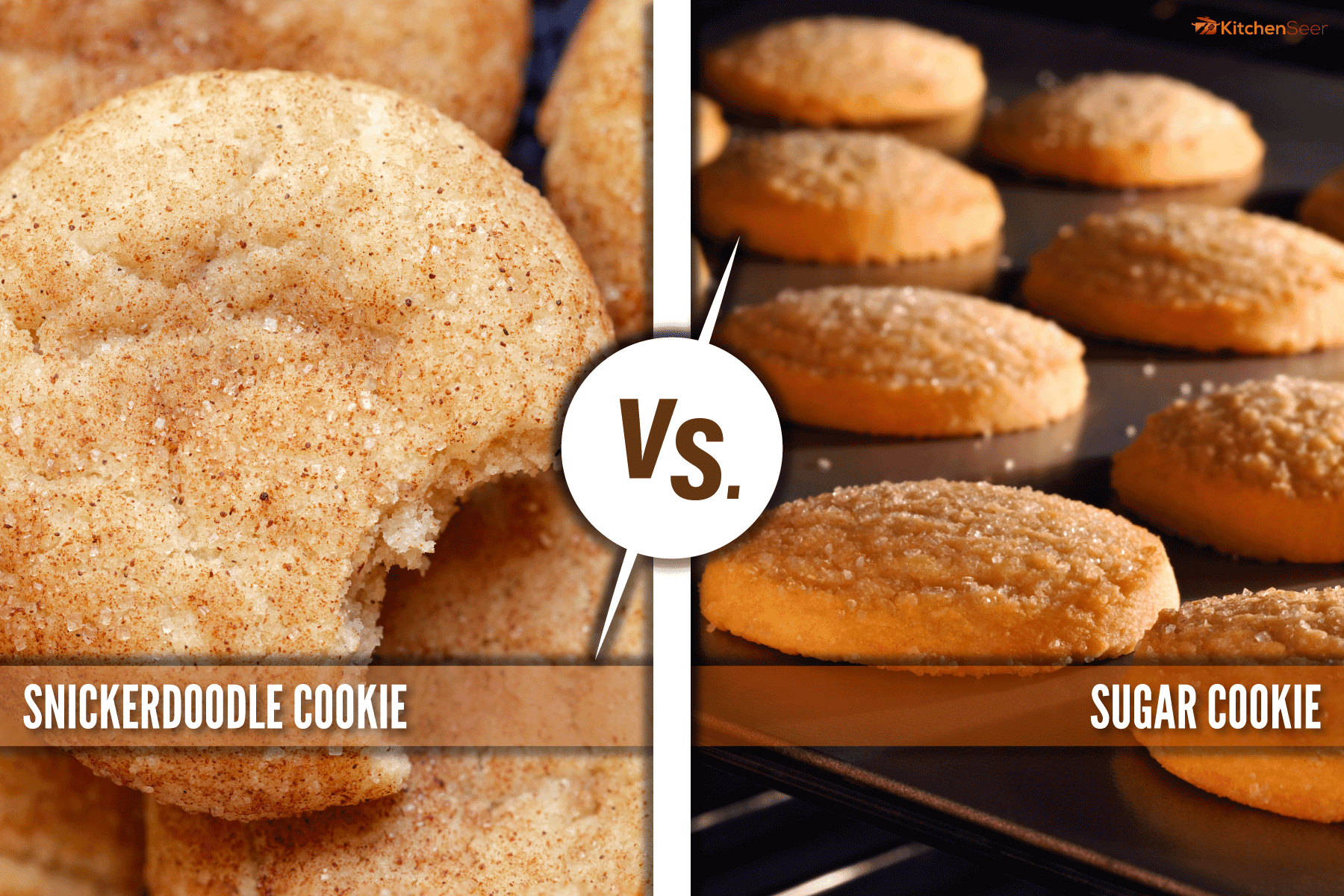
Difference Between Snickerdoodle Cookies and Sugar Cookies
Sugar cookies and Snickerdoodle cookies are two of the most popular cookies.
Unlike chocolate chip or oatmeal raisin cookies, neither sugar cookies nor snickerdoodles typically use brown sugar.
They do have some important differences.
The first difference is easy to spot: cinnamon. The cinnamon-sugar dusting on Snickerdoodle cookies goes a long way to giving them their distinct flavor.
With sugar cookies, on the other hand, the flavor of the butter and, often, a touch of vanilla comes through more clearly.
There is one other important difference is a bit subtler: cream of tartar.
If you've used cream of tartar before in cooking, it was most likely when making meringue.
The acidity in cream of tartar helps to stabilize a meringue, helping it whip up firmer and hold shape longer.
Cream of tartar serves two important purposes in Snickerdoodle cookies.
The acidity adds a touch of tartness to the cookies, which gives them a pleasant, more complex flavor.
This same acidity also has an effect on the sugar in the cookies.
It reduces the ability of the sugar to form crystals. This helps keep the snickerdoodle cookies light and chewy instead of crunchy.
Another thing you may notice is that most Snickerdoodle recipes don't call for baking powder, only baking soda.
This is because the cream of tartar reacts with the baking soda, eliminating the need for baking powder.
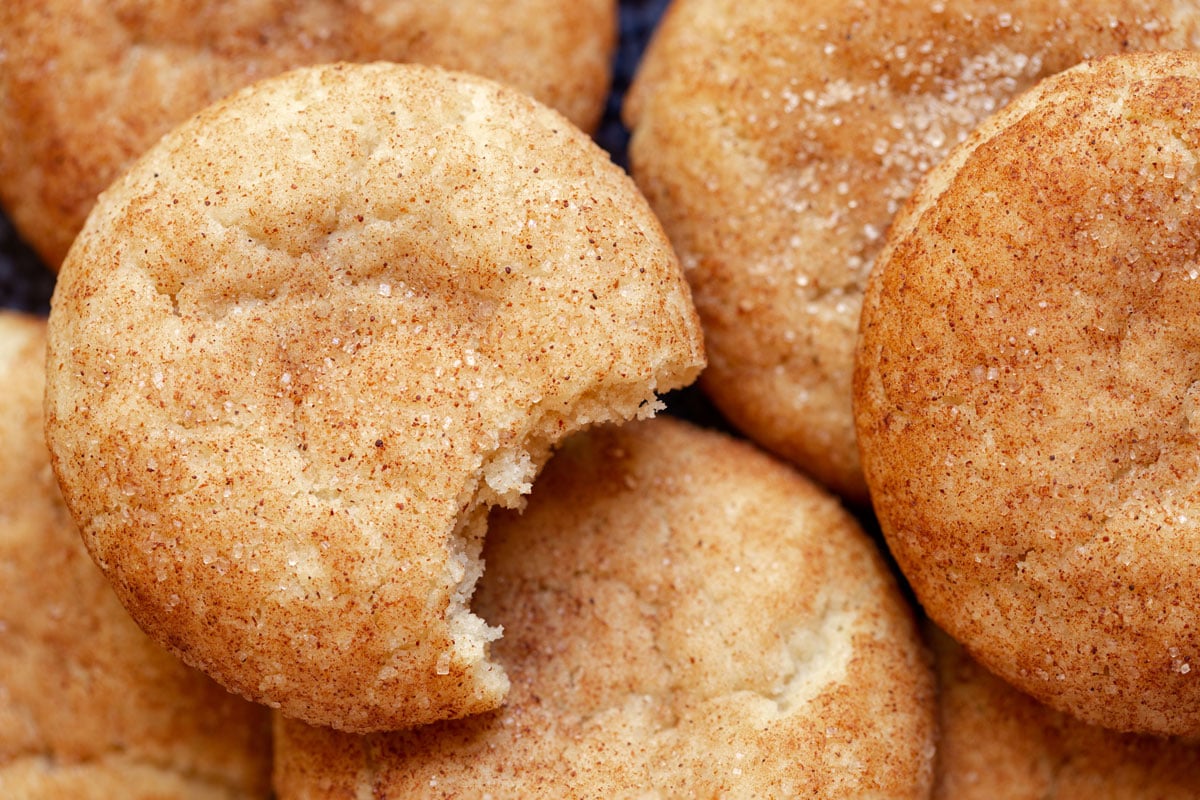
Are Snickerdoodles Molded Cookies?
Snickerdoodles are classic cookies known for their soft texture and cinnamon-sugar coating.
Cookies can be categorized based on their preparation method, and one such category is molded cookies.
Molded cookies are shaped or molded by hand into a specific form before baking.
When making snickerdoodles, the dough is rolled into balls by hand and then coated in cinnamon-sugar.
Given this hand-shaping technique, snickerdoodles can be classified as molded cookies.
However, if you want to make snickerdoodle cookies with a "twist," consider introducing a blend of spices to the mix.
Served From Scratch offers a recipe that incorporates a tantalizing blend of cinnamon, fennel, cardamom, nutmeg, cloves, ginger, and black pepper.
These spices infuse aromatic depth, enriching the cinnamon-sugar exterior with chai tea-inspired flavors.
Are Snickerdoodle Cookies Healthier than Sugar Cookies?
While Snickerdoodle cookies and sugar cookies have their differences, nutrition isn't one of them.
Both types of cookies involve nearly the same ingredients and ratios. Because of this, they are almost identical nutritionally speaking.
A 1-ounce (28-gram) portion of sugar cookies has 137 calories, 6.8 grams of fat, 19 grams of carbohydrates, and 2 grams of protein.
The same portion of Snickerdoodles contains 134 calories, 6.7 grams of fat, 18 grams of carbohydrates, and 1.5 grams of protein.
Healthier Options
Neither sugar cookies nor snickerdoodles are healthy foods, although they can be enjoyed as occasional treats without too much worry.
For those who are particularly health-conscious, there are alternative recipes for both sugar cookies.
Some of these recipes aim to reduce the amount of simple sugar and saturated fat.
If you are in the market for these alternative recipes, you may have more luck with snickerdoodles.
Sugar cookies' main flavor comes from butter and sugar, the two ingredients you need to reduce to make them healthier.
Because snickerdoodles are flavored with cinnamon and the tartness from the creme of tartar, it's easier to tweak the sugar and butter.
This recipe from Amy's Healthy Baking uses a smaller amount of butter and sugar than your standard snickerdoodle.
It also calls for whole wheat flour, which increases the fiber and protein content of the cookies.
She also provides a gluten-free flour mix alternative for those who are interested.
If you're a fan of the paleo diet, Erin Lives Whole has a recipe for paleo-friendly snickerdoodle cookies.
These cookies use a mix of almond and coconut flour, so they are gluten-free and lower in carbs.
It also uses coconut oil instead of butter and maple syrup instead of sugar.
There are also healthier recipes for sugar cookies. This recipe from Eating Bird Food uses whole wheat pastry flour and maple syrup instead of all-purpose flour and sugar.
While these recipes do have some nutritional improvements, they don't turn these cookies into healthy foods by any means.
Whether you go with a traditional recipe or a modified version, cookies are mostly empty calories.
Moderation is more important than modification to enjoy cookies and maintain healthy eating habits.
How to Make Snickerdoodles
We've seen the modified recipes, but how can you whip up some traditional Snickerdoodle cookies? We've got you covered.
This snickerdoodle recipe is cinnamony, chewy, and sure to please!
Ingredients
- Cookie Dough
- 2 1/2 cups (313 grams) all-purpose flour
- 1 teaspoon baking soda
- 2 teaspoons cream of tartar
- 1/2 teaspoon salt
- 1 cup (227 grams) butter (unsalted, softened)
- 1 1/2 cups (283 grams) sugar
- 2 eggs
- 1 teaspoon vanilla extract
- Cinnamon Sugar
- 1/4 cup sugar
- 1 tablespoon cinnamon
Instructions
- Preheat your oven to 350º Fahrenheit.
- In a bowl, whisk together the dry ingredients (flour, baking soda, cream of tartar, and salt).
- In a large bowl or standing mixer, beat together the butter and sugar until well combined and fluffy.
- Add the eggs to the butter mixture one at a time, incorporating well before adding the second. Then, add the vanilla.
- Add the flour mixture to the butter mixture and combine them well.
- Mix the cinnamon and sugar in a small bowl.
- Roll the dough into small balls by hand or with an ice-cream scoop. Roll the balls around in the cinnamon-sugar until completely coated. You can roll them twice for better coverage.
- Place the dough balls on a cookie sheet, leaving space between them so they don't touch as they spread.
- Bake for 8-10 minutes. They should lift off the sheet easily when done.
- Let the cookies cool on a wire rack.
- Enjoy!
Notes
For a gluten-free option, simply substitute in your favorite gluten-free flour mix.
Bob's Red Mill makes an excellent gluten-free all-purpose flour mix that's easy to sub in to recipes like this.
Click here to see this gluten-free flour from Bob's Red Mill on Amazon.
You can also make your own gluten-free flour mix.
This recipe, from Tasty Thin, uses a combination of almond flour, coconut flour, tapioca flour, and arrowroot flour.
You can use it in this recipe and others.
How to Make Sugar Cookies
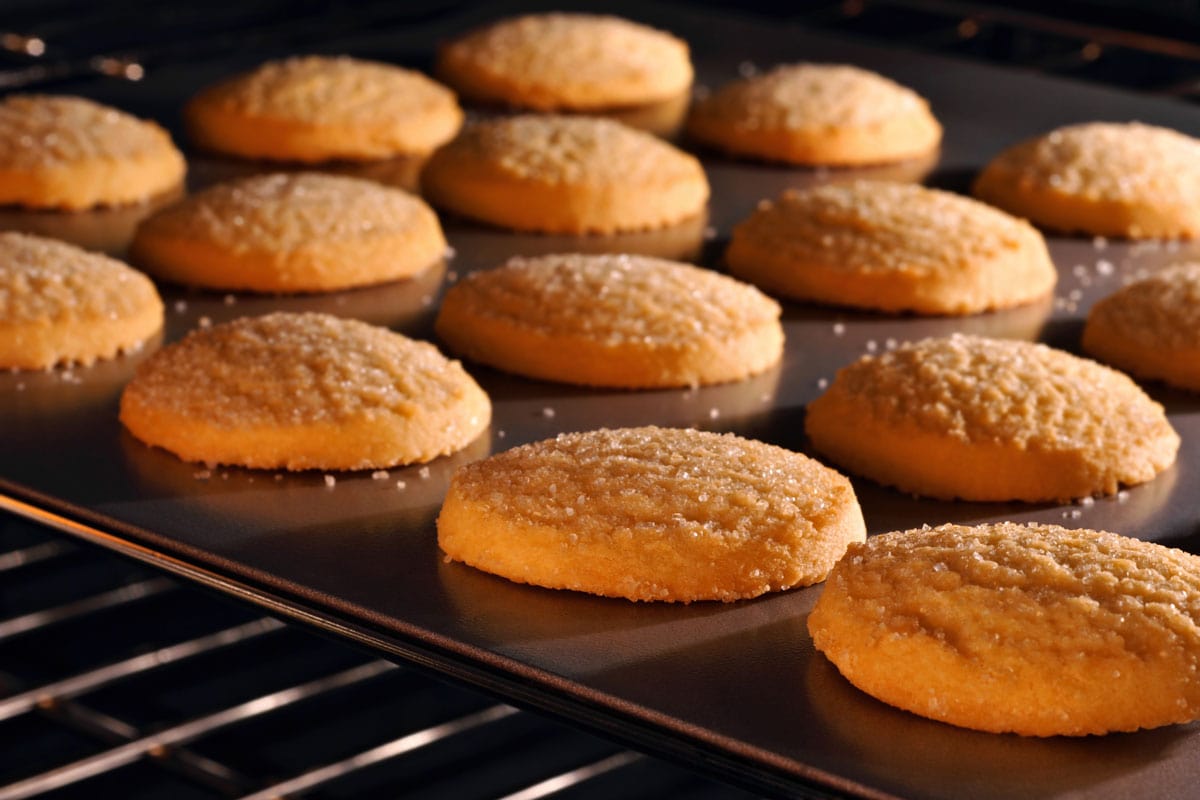
Now that we've seen a typical Snickerdoodle recipe, let's see a sample sugar cookie recipe so you can see how they compare.
Ingredients
- 2 1/2 cups (313 grams) all-purpose flour
- 1 teaspoon baking soda
- 1/2 teaspoon baking powder
- 1 cup (227 grams) butter (unsalted, softened)
- 1 1/2 cups (283 grams) sugar
- 1 egg
- 1 teaspoon vanilla extract
Instructions
- Preheat your oven to 375º Fahrenheit.
- Mix the dry ingredients (flour, baking soda, baking powder) in a bowl.
- In a large bowl or stand mixer, beat together the butter and sugar until they are light and fluffy.
- Add the egg and vanilla to the butter mixture and whisk it together well.
- Add the dry ingredients to the butter mixture and combine with a spatula (or paddle attachment if using a standing mixer).
- Roll the dough into small balls and place on a cookie sheet, making sure to leave space for the cookies to spread in the oven.
- Bake for 8 to 10 minutes or until thin cracks start to form on the cookies. Don't wait for them to change color, as this will overcook them.
- Let the cookies cool on a wire rack.
- Enjoy!
Notes
Bake for a shorter time for a softer cookie. Back longer for a crunchy cookie.
You can also use your favorite gluten-free all-purpose flour mix for this recipe.
Check the notes for the Snickerdoodle recipe to see more about gluten-free flour.
Making Cut-Out Cookies
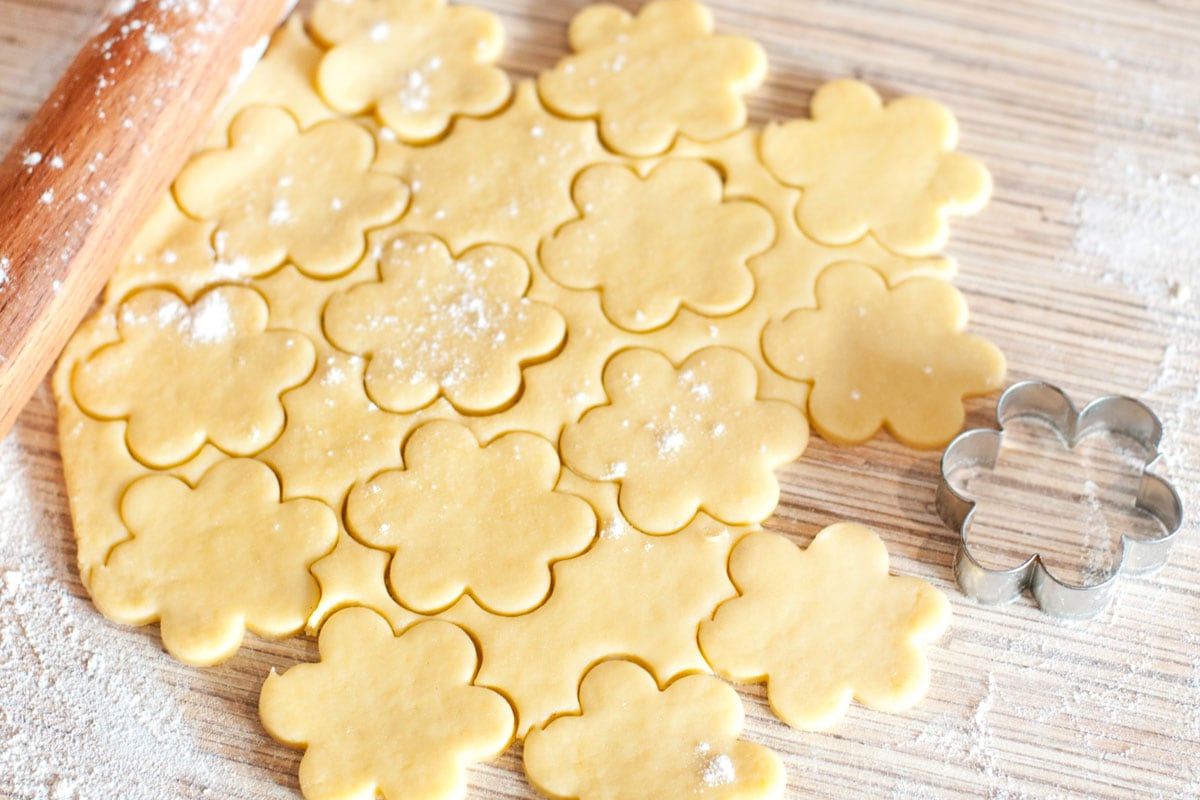
You can use this same recipe for cut-out cookies as well! You will need to leave yourself more time, though.
Once you've made the dough, divide it into two parts, and roll each into a thin disc.
Wrap these discs up with plastic wrap and let them chill in the refrigerator for two hours. You can also chill it overnight.
When you are ready to make your cookies, preheat the oven and line your tray with parchment paper.
Take out the first disk and roll it out to 1/2" or 1/4" thickness. The thinner you roll it, the crispier your cookies will be.
Keep the second disc in the fridge until it's time to roll it out too. The colder the dough is, the easier it will be to work with.
Cut your shapes, place them on the lined tray, and bake for 8 to 10 minutes.
If you rolled them thin or have shapes with narrow points, you will want to monitor them closely and may need to reduce the cooking time.
Wrapping Up
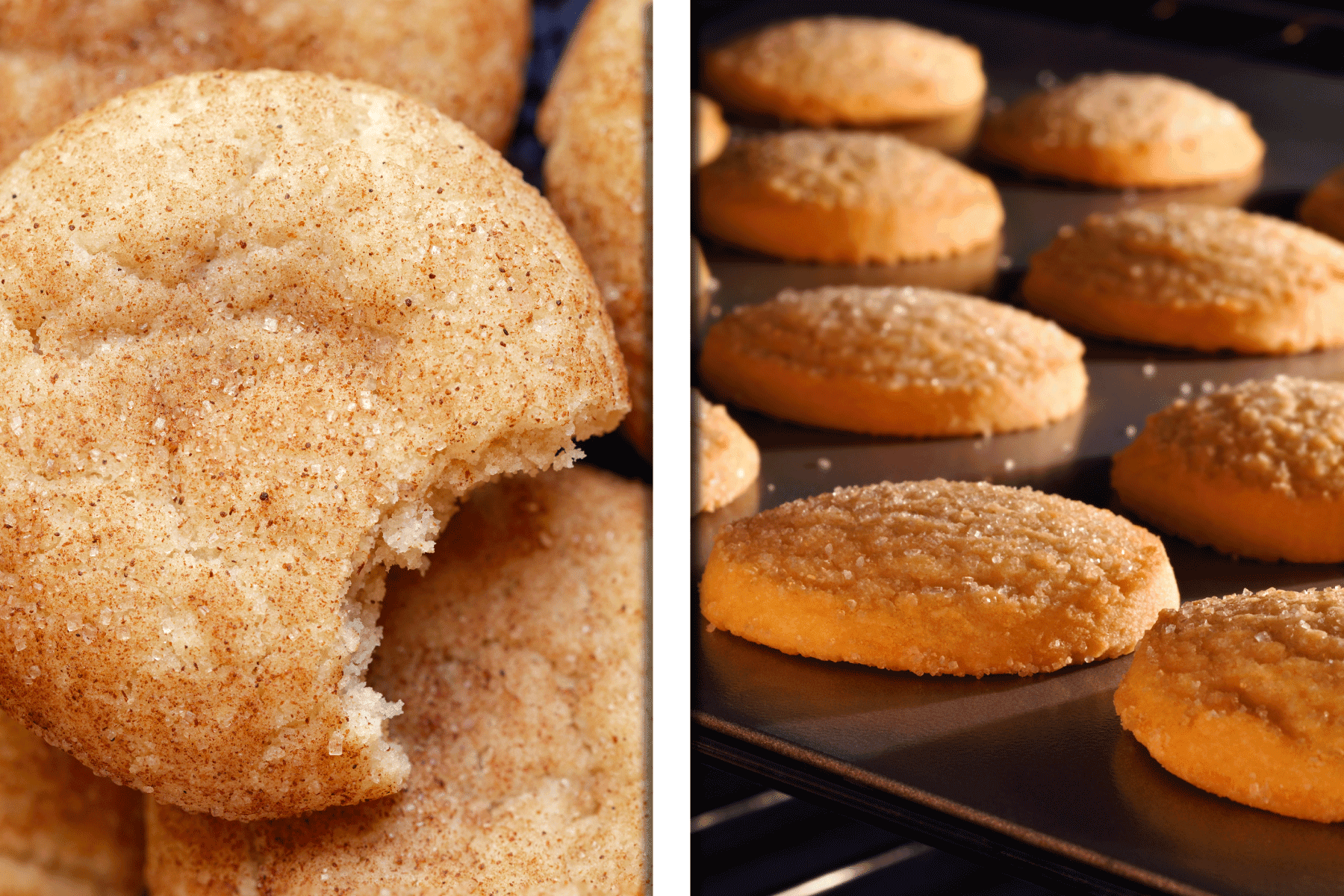
Now you know more about Snickerdoodle cookies, sugar cookies, and what makes them tic and taste great.
Cinnamon and cream of tartar give snickerdoodles their characteristic taste and softness, while sugar cookies keep it simple.
Whichever you choose, though, you'll be sure to have a tasty treat!
If you enjoyed this article, be sure to check out these enlightening posts:
Should Cookies Be Refrigerated?
Can You Make Cookies Without Butter?


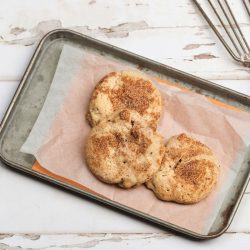
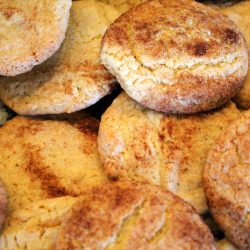
![Overhead view of homemade snickerdoodle cookies with a bite missing - Why Are My Snickerdoodles Flat [And How To Prevent This]](https://kitchenseer.com/wp-content/uploads/2022/04/Overhead-view-of-homemade-snickerdoodle-cookies-with-a-bite-missing-250x250.jpg)
